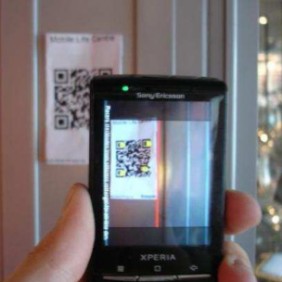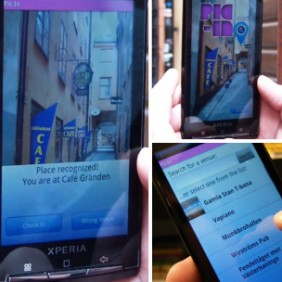Mobile 2.0
field_strapline['und'][0]['value'];?>The Mobile 2.0 project at the Mobile Life Centre has explored the next generation of mobile services and applications - apps and services that utilize the unique aspects of mobility and capabilities of mobile devices. The rapid proliferation of new mobile devices, and embedded sensors has facilitated the rise of new mobile services, with increasingly complex capabilities. App stores and other wide distribution channels have now provided small-scale developers, including researchers, with the opportunity to reach an audience of potentially millions of users. The Mobile 2.0 project has explored the research and development possibilities of this new ecosystem by envisioning mobile services that leverage uniquely mobile settings (‘the phone as a sensor’), by using existing platforms and services for service creation and distribution as mobile mashups or data sources, and by conducting ‘Research in the Large’ through widely distributed iterative prototypes.
The project approached this arena in three different ways. Firstly, the project investigated the usage of existing commercial (location-based) services through both in-depth qualitative studies, as well as exploration of web-scale data, as well as start-up strategies. Second, by prototyping a set of examples of mobile apps and services based on a variety of different platforms and technologies; designing and implementing our own 'one-bit-applications' - applications that do one thing, but do that one thing extremely well. Thirdly, we have explored new ways to rapidly develop, but also distribute such services.
Through this process, the project generated new mobile innovation methods, including Grounded Innovation and the ‘Magical Bits’ brainstorming method. It also generated deep knowledge on not only mobile development and distribution, but also specific knowledge on usage motivations of mobile location-based services, the effects of service design features on user attitudes an behavior; as well as for example people’s perceptions of ‘place’.Example location-based web apps, services and mash-ups within the project have covered a wide range of media and domains, such as photography, chatting and social awareness. Examples include Columbus (local exploration through geotagged photographs), Subway Friend Finder, GeoChat, Now Or Later, (the future check-in), spotisquare (add music to places), φ² (physical check-ins), pic-in (check-in by taking a picture, 3rd prize Ericsson Application Awards, company category), Subway Art (nomination student category) and Portrait Catalogue/Most Wanted (extremely local & personal photo-sharing), and many more.


PicIn

SpotiSquare
Also See:
Web Page:
Videos:
Demo GeoChat
Subway Friend Finder
Members:
Mattias RostSara Ljungblad
Lars Erik Holmqvist
Connected Projects:
Publications:
Partners:
EricssonMicrosoft research
TeliaSonera
Kista Science City

